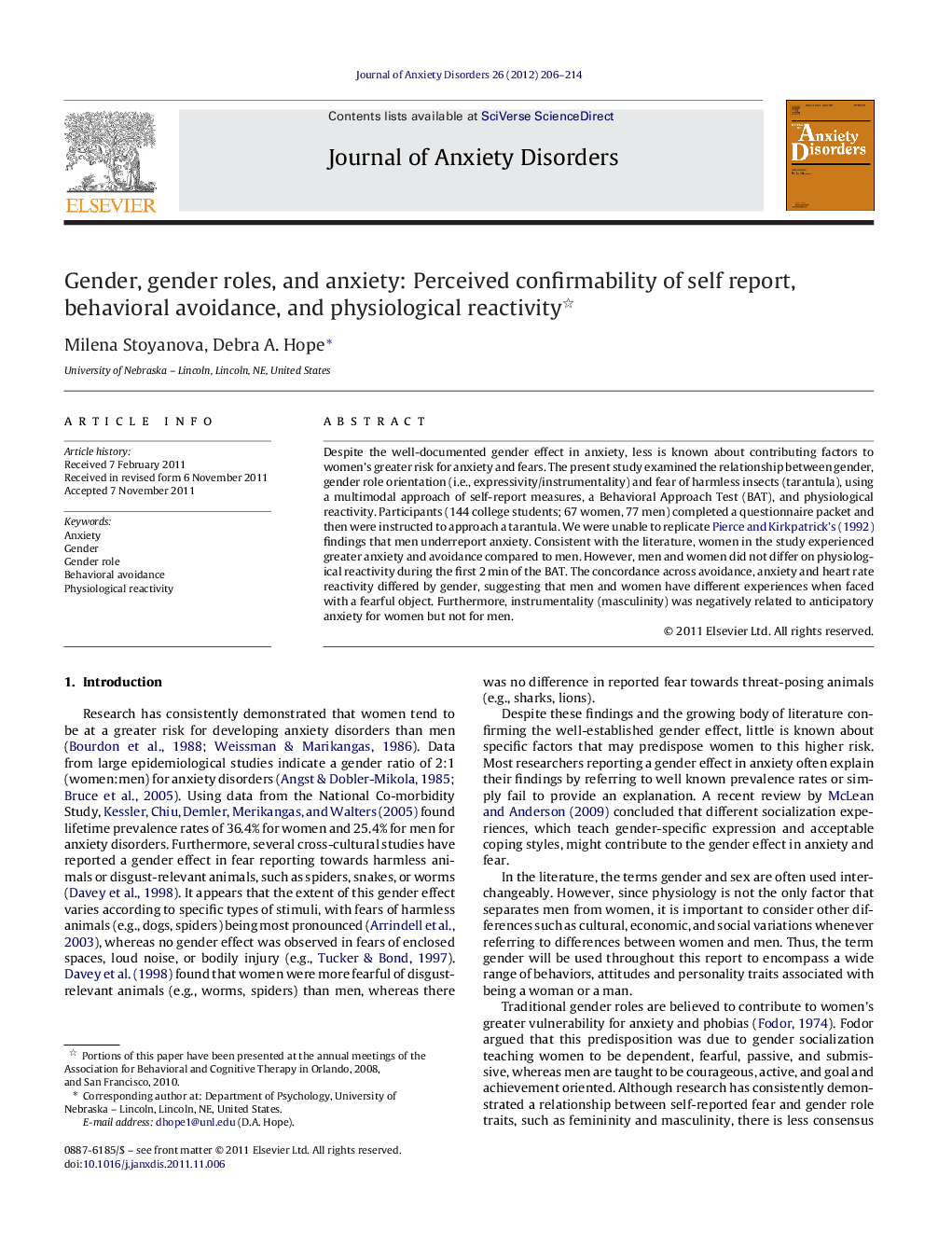| Article ID | Journal | Published Year | Pages | File Type |
|---|---|---|---|---|
| 909550 | Journal of Anxiety Disorders | 2012 | 9 Pages |
Despite the well-documented gender effect in anxiety, less is known about contributing factors to women's greater risk for anxiety and fears. The present study examined the relationship between gender, gender role orientation (i.e., expressivity/instrumentality) and fear of harmless insects (tarantula), using a multimodal approach of self-report measures, a Behavioral Approach Test (BAT), and physiological reactivity. Participants (144 college students; 67 women, 77 men) completed a questionnaire packet and then were instructed to approach a tarantula. We were unable to replicate Pierce and Kirkpatrick's (1992) findings that men underreport anxiety. Consistent with the literature, women in the study experienced greater anxiety and avoidance compared to men. However, men and women did not differ on physiological reactivity during the first 2 min of the BAT. The concordance across avoidance, anxiety and heart rate reactivity differed by gender, suggesting that men and women have different experiences when faced with a fearful object. Furthermore, instrumentality (masculinity) was negatively related to anticipatory anxiety for women but not for men.
► Women experienced greater anxiety and avoidance compared to men. ► No gender effect on physiological reactivity during first two minutes of the BAT. ► Concordance pattern across avoidance, anxiety, and heart rate reactivity differed by gender. ► Instrumentality was negatively related to anticipatory anxiety for women but not for men.
